Bette-Jean Masters
A couple weeks back I was trying to figure out what I wanted to cover for next recording. We have a One Note that we share which is a digital notebook where we store our episode notes and stuff like that, and it's also where we stow away our story ideas. I was looking at my list and saw a topic I had picked out, British Columbia's Bermuda Triangle.
It's this idea that there is an area with a high concentration of mysterious disappearances that roughly forms a triangle. Which naturally sounds right up our alley, but then I was having a conversation with my best friend, Josie.

Episode: File 0095: Bette-Jean's Crystal Cattle pt.1
Release Date: Apr 14 2023
Researched and presented by Cayla
Josie told me she had been watching this show where online sleuths solve crimes and had pondered the idea if they could solve a mystery that had haunted her mom for sixty years.
Naturally I am apprehensive of online sleuths, even though in some aspects I am one. But I know enough to know there have been far too many times people have got it wrong and ruined lives. I can count dozens of times this has happened with the Jen Saga, and in that case we aren't dealing with murder or straight up illegal activities, and everyone knows a good armchair detective's favorite topic is murder.
And I mean, do I even have to mention pizza gate? Also Netflix has a really good show called "Clickbait" it is a scripted drama, but it really illustrates just how easy it is to jump to conclusion and the horrific consequences that can have.
Anyways back on topic. Josie tells me that her mom's best friend, Phyllis, had a sister that went missing and has never been found. She sends me a news article about the case and I begin to dig
This happened in a tiny, not-even-town in British Columbia. A lot of this online research is so dependent on documentation being made available online, like newspapers, public records etc which even now is a slowly growing initiative in big cities, but certainly hadn't touched the small community we grew up in, nevermind this tiny logging community in the bush. Also in Canada there aren't the same record sites you have the States so it's a lot harder to find information, but nonetheless we began to dig.
Edna Bette-Jean Masters
The story goes: On Sunday July 3rd 1960 around 8:00pm, Alice and Maurice Masters were doing business in the Red Lake post office. Outside their 21 month old daughter was playing with the kids of two family friends. When the Masters emerged from the post office, their daughter was gone and the kids had no idea what had happened to her.
Naturally word spread quick as Red Lake was a tiny logging community where everyone knew everyone and the RCMP was quickly involved. The lumber mill shut down and it was estimated that between 30-60 members of Red Lake and the surrounding communities pitched in to help with the search. A police dog was brought in to search the area but it's said it became confused because of all the people that had been through the area.
There were three suspects listed in the reports, a momma black bear that had recently lost her cub and had been known to hang around the community's children. A couple in a copper colored car with Alberta plates. And a three legged cougar
Some papers claim that late Tuesday, July 5th, two days after Bette-Jean went missing, the parents call off the search. No trace of Bette-Jean was ever found.
And that's the story, well as it was reported in the Province and the Vancouver Sun, two of the biggest newspapers in the province, but also written some 400 kms/250 miles away. I had no luck finding anything in the few digitized newspapers from the communities closer to Red Lake, I even emailed the Revelstoke Museum which has an extensive archive of all their local papers and they told me nothing had been reported in their papers.
This leaves so many questions. What post office in the 1960s was open at 8:00 pm on a Sunday, never mind in a community that maybe had a couple dozen people living there? What parent would call off the search of their toddler after two days? How could absolutely nothing be found? Why hadn't the police dog found anything? What ever happened to that cougar's fourth leg?
Turns out things are not as clear cut as the papers reported them, and it seems everyone that hails from that community has a slightly different version of events.
In 2009 the small communities surrounding Red Lake got together and wrote a book titled "Memories of Criss Creek, Red Lake and Copper Creek : 1910-1980 or so". They talked to the people that used to live there and their children, collecting stories of these tiny communities. Josie had been told that book contained some more information about the story. As every other resource had run dry, that was my next stop
This book was published on the smallest scale, so it's not like there was an ebook I could buy or a copy I could snag through Amazon. I discovered that if I wanted to read this book, I would have to go to the central library here in Vancouver, so that I can read it in their special collections room. This was kind of cool as I had never done something like that, but also involved leaving my house and I wouldn't be able to do it by the next time we recorded, so I did a story on cassowaries while I planned my trip.

Memories of Criss Creek, Red Lake and Copper Creek : 1910-1980 or so
The book opens talking about the founding families of these tiny communities, the early settlers of the 1900s that came with almost nothing going deep into the wilderness and making a home. Fond memories of generations past doing their best to make a living and provide for their families


They talk about communities so small that they didn't have phone or even power for a long time and whose school was a cabin that had been adapted, and doubled as their post office. In 1960, the year of the disappearance, the school had 33 students in total, across all grades and coming from the surrounding communities. And this is a time it wasn't uncommon for families to have several children, for Bette-Jean's family, in the end there would be 6 children. So you can get an idea of just how small this community was
In this book, Bette-Jean's disappearance is mentioned several times each story adds a few more details




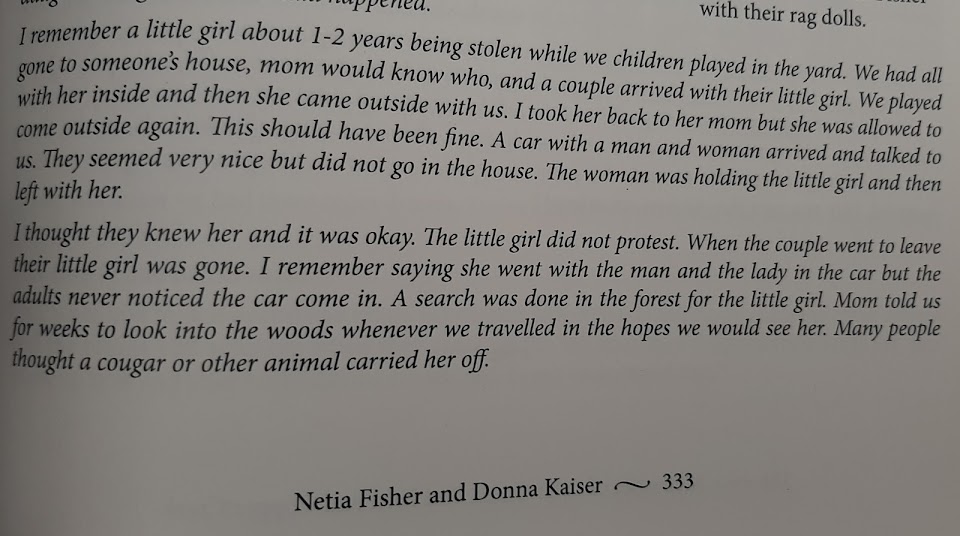
One thing you may have noticed was some inconsistency on the dates. In one story the event happened on July 1 in another it was July 1 1956. The newspapers reported it happened on Jul 3 1960 and that's also when all the reporting happened, so I have to side the papers here.
We also have to remember that these stories were recorded in the early 2000s at the earliest, more than 40 years after the disappearance, and memory is a really fickle thing, especially if you were a child at the time or your getting into your later years now.
Nowhere in the papers does it mention someone witnessing Bette-Jean talking to the drivers of the car and getting into the vehicle with them, but it's entirely possible this did indeed happen, or it could be the result of stories retold again and again over the years where ideas and thoughts can become confused with memories.
Every time you remember an event, it is reconstructed in that moment, our memories aren't just like a DVD you can plug in and get the same experience every time. Our brains reconstruct our memories based on details that stand out to us and it's easy over time for us to combine these details with ideas that we constantly hear paired with it. This isn't a malicious or even conscious thing and it's one of the reasons that eyewitness reports aren't completely reliable
When I was in high school I took an elective on Psychology. We had began to study memory, and one day, a guy walks into the class room, no one knows who he is, he walks to the back of the room, looks out the window.
The teacher asks if she can help him and he says no, he just needed to check the window and leaves. She takes this as a perfect opportunity to put into practice what we had been learning and she asked us all to write down every detail we remembered about the man.
You would think the obvious things like shirt color, hair color etc would be pretty easy to get right especially having seen the man just moments before. But when we compared notes, nearly everyone remembered completely different things, someone said his shirt was brown, someone said it was blue. Our brains only record details that we deem important in the moment. We don't have the capacity to capture every single thing we experience, so our brain picks and chooses which things should be recorded into long-term storage, and the shirt color of a random guy just isn't high in priority on our list of things to remember.
This is why eye witness statements can be so unreliable, as often when things are happening, we don't think they are important at the time. If you have siblings I am sure you have noticed that the memories each of you have from your childhood can be completely different, and they may remember something you don't or vice versa.
And this is before you factor anything else in, like ADHD, which when untreated, can greatly impact your memory.
What Happened?
We've talked about what everyone else said about what happened, so time we get down to what the family believes happened
I want to stress that this is coming to me fourth hand, delivered by my best friend, who heard it from her mom, who heard it from her best friend, who heard it from her family and family friends, as she wasn't born for another couple years
According to Josie things went a little differently in real life versus what the papers reported
She says that she's not sure where the post office thing came from, as Alice Masters had been in Red Lake visiting friends, the Muskett family. She was there with Bette-Jean, her five year old son and her younger child.
Alice took the baby inside to nurse, leaving the eldest of the Muskett children, Jimmy who was 11, with Bette-Jean who was playing outside.
The boy set her down under a tree and ran inside for something, when he came back out she was gone. Jimmy felt responsible and stayed up all night looking for her
Some of the papers claimed the family called off the search after two days, but Josie says this is not the case. She says the RCMP helped with the search effort for two weeks, but after that they kind of gave up. Alice claims that after that, she never heard from the RCMP again in regards to the case until 2013, that is also the first time she recalls seeing a story in her local papers about her daughter's disappearance. She felt like the authorities simply didn't care
There are four scenarios that seem most likely in regards to her disappearance
Environmental
Red Lake is rugged country with two capital Gs. Forests so dense you don't see daylight in their depths. Mosquito infested and strangled in underbrush, getting through those woods is no easy task even for an adult that knows what they are doing
It's noted that when the police were building a search team they requested only experienced hunters and loggers join the efforts, just because of how treacherous the landscape can be.
If a child were to get lost in that wilderness you wouldn't see them from a helicopter above, if you went inside the forest you likely wouldn't see them until you were on top of them. It's easy to imagine a child getting lost and being unable to find their way out.
But that's assuming they could get far in the first place. The whole asking for experienced adults only for search party says something about just how wild that wilderness is.
Several years back, Josie's mom and Bette-Jean's sister, Phyllis went on an investigative trip cross province to Red Lake. They went to where Bette-Jean was last seen and Josie's mom noted just how impenetrable the woods were, and she's a woman that knows wilderness, being part of a hunting family and the community we're from that has very similar vegetation.
She said she can't imagine a toddler getting anywhere without tearing their clothes or losing their shoes. And Bette-Jean was in sandals. As someone that went quadding in flip flops up a BC mountain, I can tell you that's a terrible idea, and I am an adult
But the forest isn't the only environmental threat, Red Lake is a lake after all. We do know that a nearby pond was drained in search of the toddler and divers searched the lake to no avail
Wildlife
Of course we're going to talk about the three legged cougar. But first the momma bear. As the papers mentioned there was a black bear in the area who lost her cubs and the kids reported her coming around
Despite the common narrative, black bears are not vicious killing machines. If you grew up around these bears you know they're timid and will run up a tree the second they get spooked. It's common knowledge to not get between a mother bear and her cubs, but, while this is not a good idea regardless, this fearsome reputation primarily comes from grizzlies, where 70% of lethal grizzly attacks occur because of a human's proximity to their young
For black bears, since 1900 there has been roughly 61 deaths by black bears in North America. And of those 61 deaths only 3 were attributed to mothers with cubs. Meanwhile there's 30-50 deaths by dogs a year. Think about that one.
Bears are not dogs, and bears in deep wilderness are the biggest threat as they're more likely to get spooked and not have much experience with humans. But even then, unless the bear is unwell, or you have surprised it, it would much rather climb a tree than engage in combat. Sure they may huff about and look threatening on occasion, but they're just trying to scare you off.
But don't be an idiot, don't go thinking bears are your besties now. Just give them space and respect and 99.99% you will be fine.
So what about a momma bear that has lost her cubs? We have seen many female mammals when they lose their young will experience a sort of depression. They become lethargic and disinterested in things they normally enjoy. There have been even stories of mother mammals refusing to eat and perishing in their sadness
But there have been many recorded cases in the wild and in domestication where a mother mammal that lost her young, adopted the young of another or more bizarrely adopted young of other species. You can argue this is all chemical, as mammals release mommy hormones that drive them to nurture. But there have been numerous studies now that prove that many animal species have measurable emotions. For a wild animal adopting another species makes no sense from a survival standpoint, but from the perspective of a grieving mother given the opportunity to give that love to something else, it makes perfect sense.
But what about human children? Was this bear a threat? Everyone has heard of the jungle book, but there are several real, documented cases of human children being raised by animals.
And well, we're not so different after all. Almost all newborns of every mammal has similar traits big eyes, large heads, chubby cheeks, small nose and mouth. These characteristics speak to us on an instinctual level. It's why we find kittens so damn cute. Because the wiring that encourages us to care and nurture our own young, is calibrated to the same traits expressed in the children of other mammals.
So why wouldn't that work in reverse? Human children are just little naked bears (and if you have never seen a naked bear, it's terrifyingly human)
But let's pretend that was not the case and the bear was a threat to this small child. For the three-legged cougar, it's not a far stretch to imagine the cat going for Bette-Jean, any predator that has a severe handicap like a missing limb is going to have a much harder time hunting for food, and they become much more opportunistic. But if that were the case you would think there would be some evidence left behind as the cougar would've had to take her with it.
Jim Farquharson, a professional game hunter braved the bush in search of the toddler. He had plenty experience hunting predators and even came armed with his own cougar hunting dogs. He went out into the bush and shot every predator he could find, and checked their stomach contents, but never found any trace of Bette Jean. It's not clear if he killed the three legged cougar and the momma bear in particular, different sources report different the successful hunting of different prey, some said it was multiple cougars, some said it was a bear and cougar and others simply don't specify, though it's easy to imagine a depressed momma bear and an injured cougar would make for easy tracking
Foul Play
It was Jimmy that had seen the car with Alberta plates prior to him going inside, as he was a big car fan. Based on the various descriptions the car had "cat-eye" or "bat-wing" taillights and was a color somewhere between biscuit/copper and rust. I don't know dick about cars, but luckily for me, there was only one car with those kind of taillights in 1960 and it was the 1959 Chevrolet Impala. These tail lights were only used on the 1959 model making it a very unique looking car.
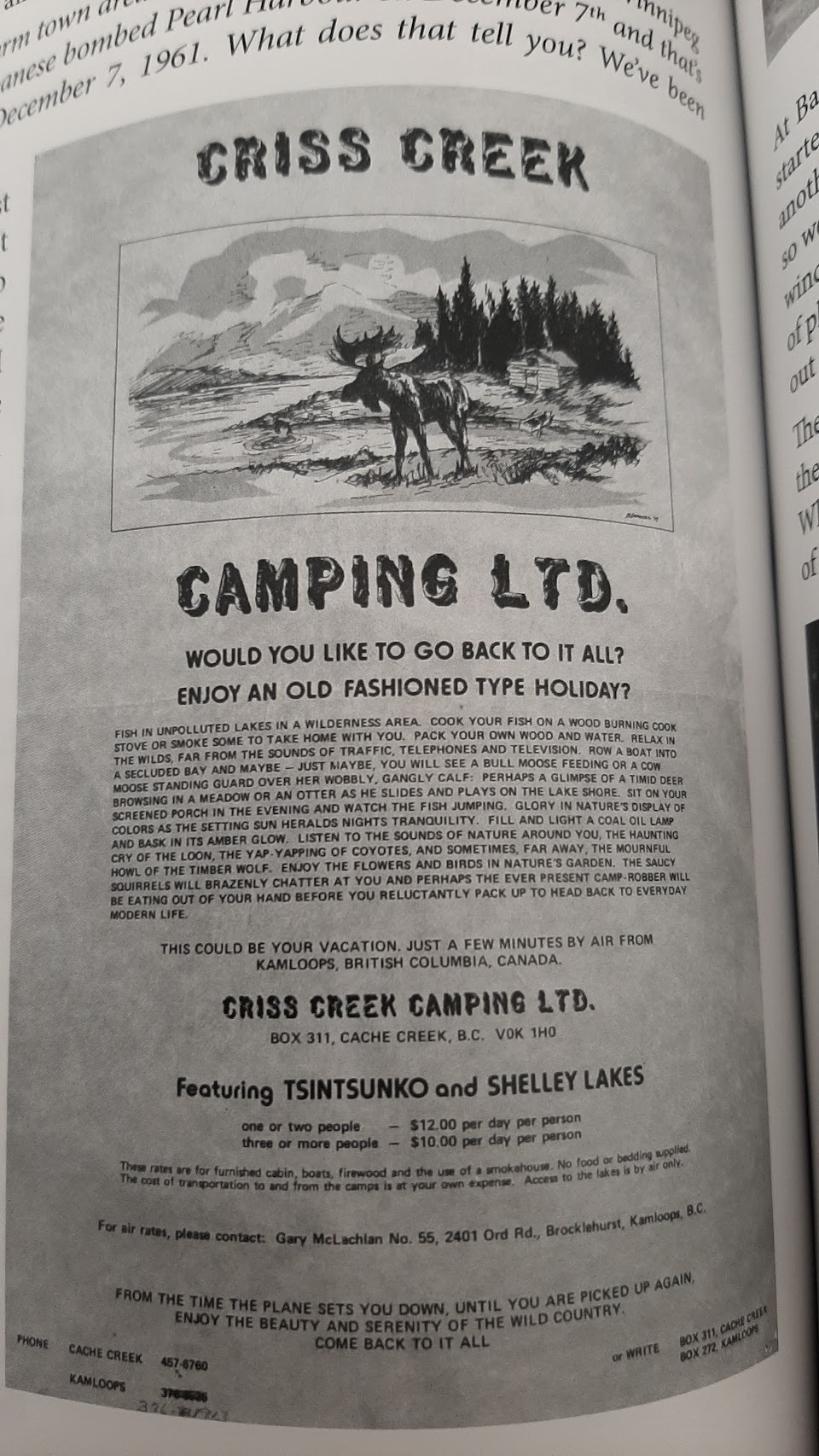
In the stories from the book, many mentioned suspicious things related to this car, that they'd seen the couple talking to Bette-Jean and bringing her into the car and another person had seen the car driving away and pushing something down in the backseat. Josie was able to add that Maurice Masters, Bette-Jean's dad also encountered the car on the road on the way to meet up with his family, he recalls it particularly because it was driving like a bat out of hell on the rugged logging roads.
Claims of suspicious behavior aside, this couple were suspicious for other reasons, one being the police dogs
See according to Josie, the story she had heard was not that the police dogs were confused like the papers reported, instead they always seemed to lose the scent of Bette-Jean on the road side, which could indicate that she was put in a car and driven away
They also had Alberta plates. It's a long way from anywhere Alberta to Red Lake, which was a small logging community in the center of a dense forest. The only real recreational reason to come up there besides hunting and hiking, was fishing, there weren't any stores or restaurants, it was purely rural residential. Criss Creek which was several kms down the road did advertise itself as a camping destination.
But these aren't the kind of hobbies you take a nice car out to do, especially not on logging roads and the Impala was a really nice car. In the memories book there were several pictures of the roads in the area, if you have ever went backwoods fishing to places only locals know about, you probably have a good idea of what these roads look like. They are narrow dirt trails at best, pitted with deep ruts and studded with large rocks, not really designed for two vehicles to be on the road at the same time. In the spring these roads flood in several areas, turning large stretches into pure mud, making it really difficult even for the locals to cross
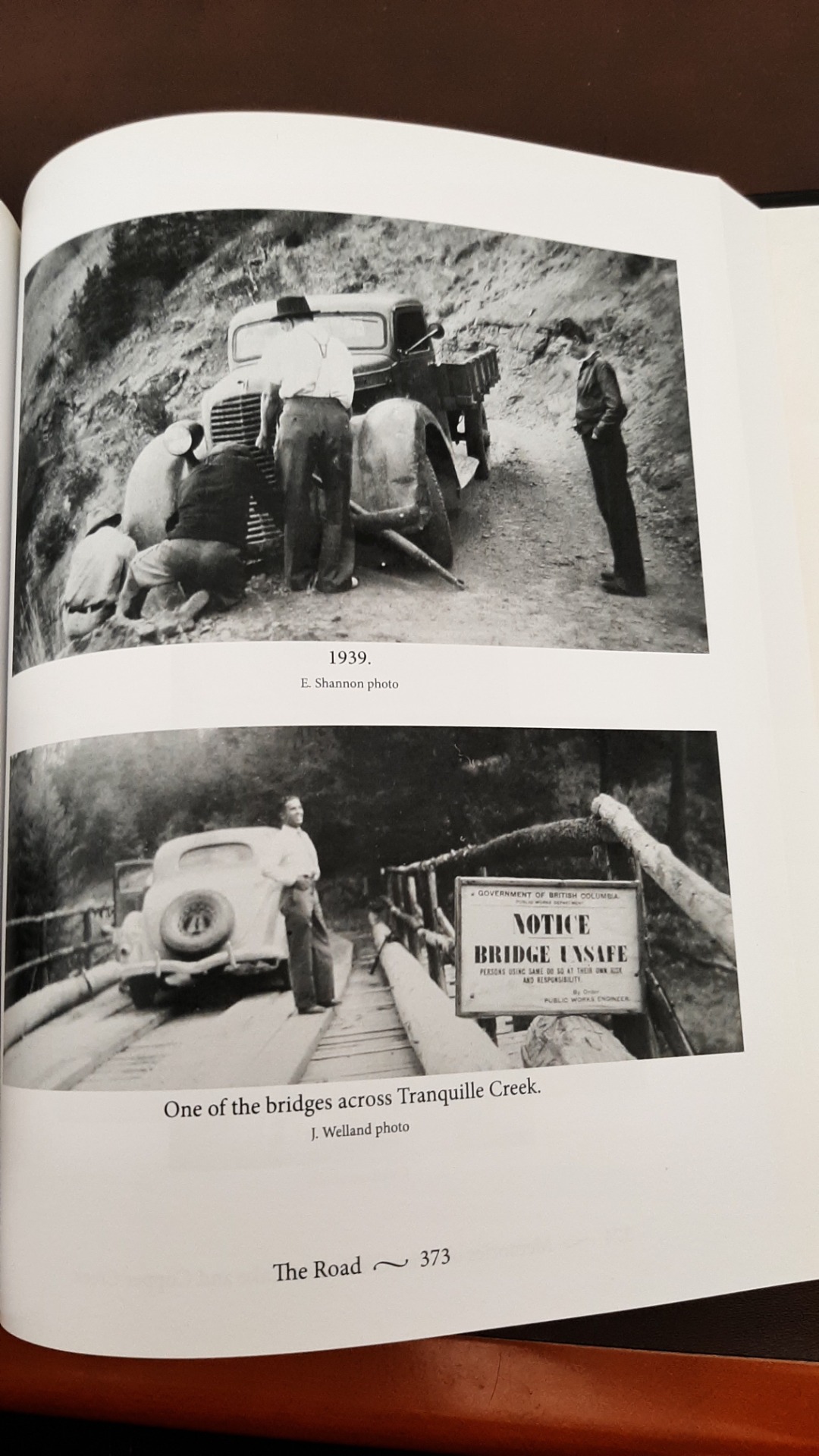
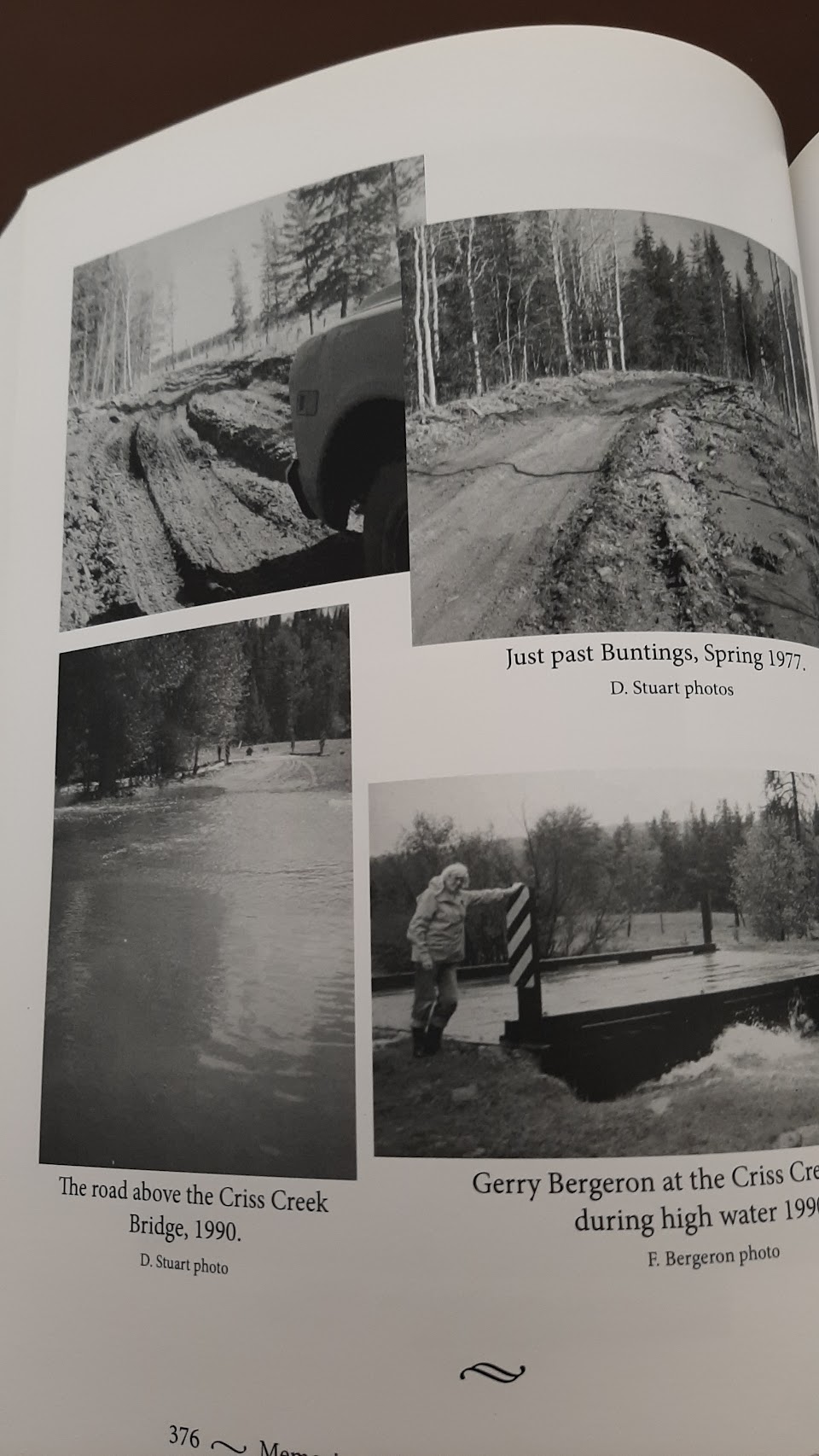
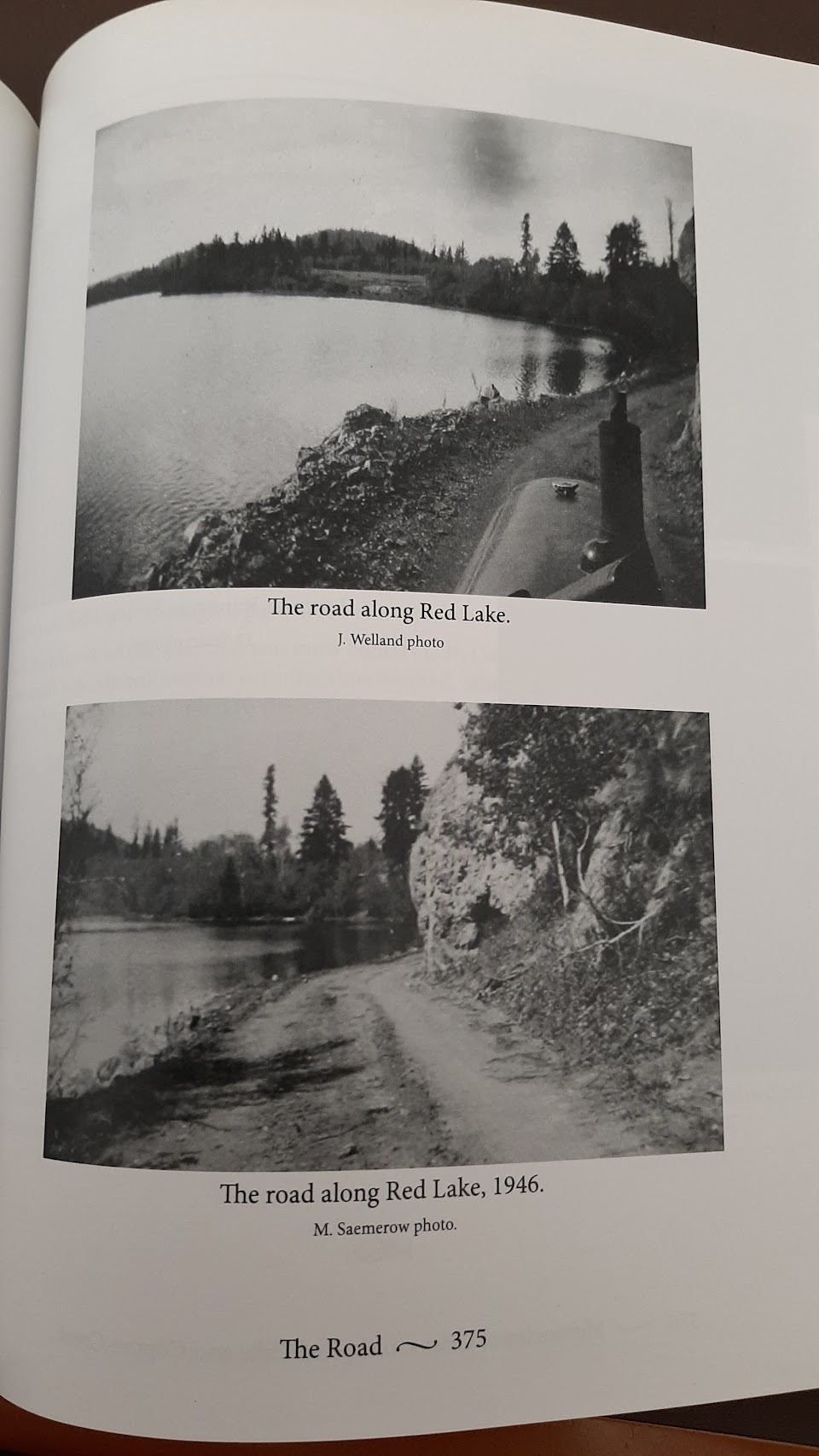
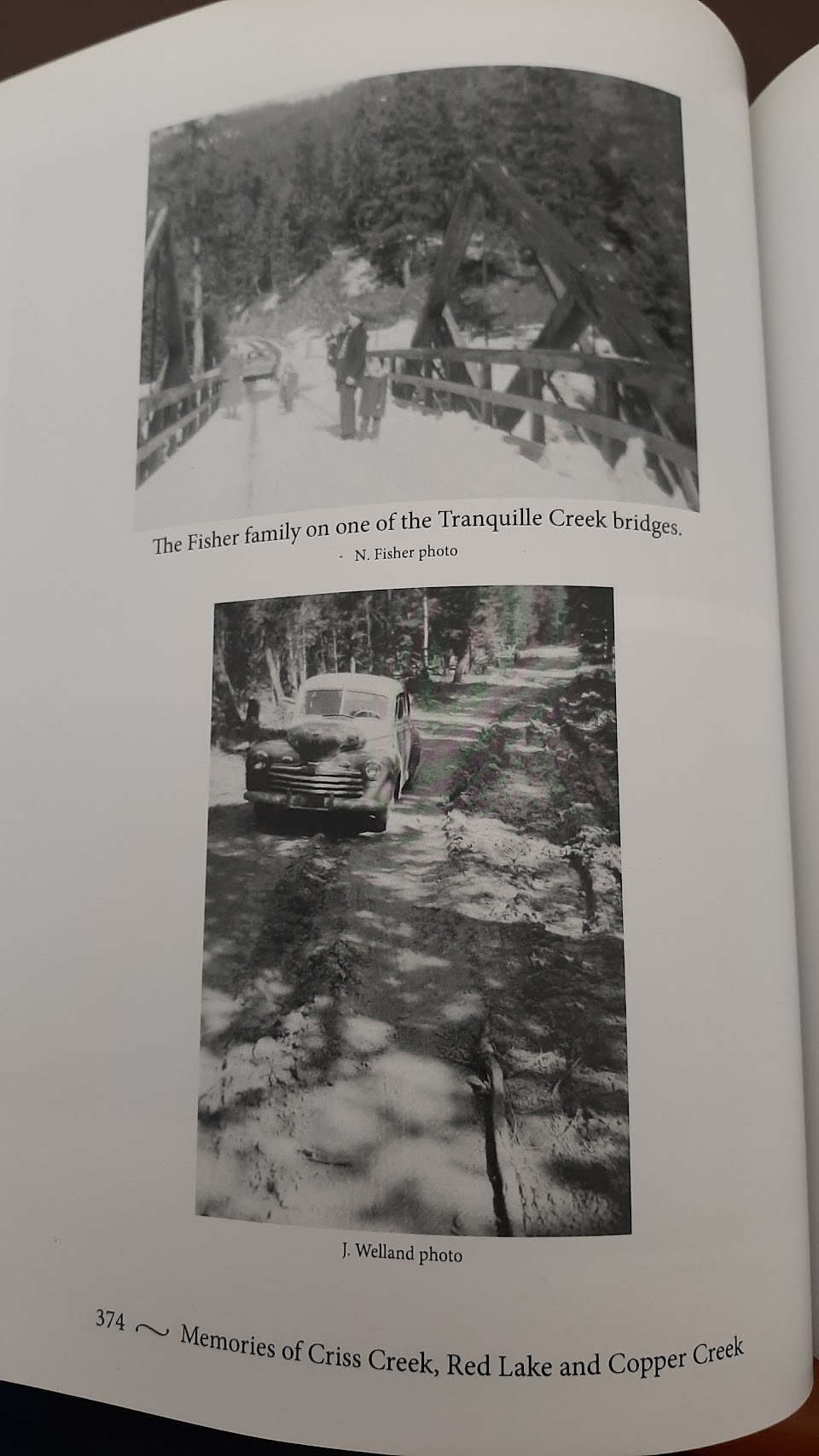
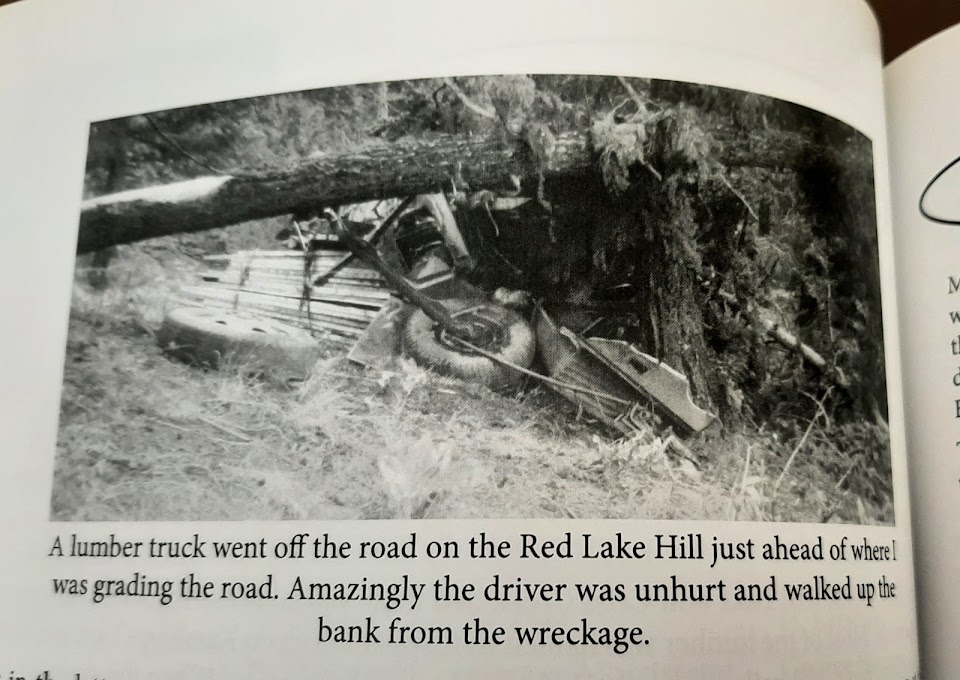
On one page I even saw a lumber truck that had gone off the road, thankfully the driver was fine. But if it's your job to navigate these roads and even you have a hard time sometimes, you can imagine the conditions we're dealing with.
Back to the Impala, like I said, it's a really nice car. Being so unique I decided to check all the newspaper archives for Alberta for any mentions of this car for sale. And well it was a very popular car, but it certainly wasn't affordable to the average Joe. The listings for the car usually fell between $3000-$4000 based on the customizations, even the used ones rarely went for less than $2500.
Average wages for a Canadian male in 1960 is $116/week on salary, or $80/week on wages, if you're on salary you're making a little over $6000 a year, on wages $4100. So blowing a years salary on a car just doesn't seem realistic for the average person. Some of the dealerships offered payment plans, but it's not likely your lower or middle class family had a car like this.
But the Impala is different than a lot of fancy cars, like the ones we see today. Yes there were two door models, but they also offered four door. It had a tailgate and was huge capable of hauling all sorts of things and it certainly wasn't a low rider, this car did have clearance. The car was advertised as elegant and youthful (read: cool), advertised as the kind of car your wife wouldn't be mad about if you bought it without telling her (I am not kidding this was literally one of the advertisements I saw). Power, safety, luxury everything you could want, but not just that, it was advertised for camping as well


So it's not unreasonable that the couple may have been looking to camp or go fishing. But why in BC and not in Alberta? And not just BC but middle-of-nowhere-BC. Josie and I grew up in a tiny town on the edge of BC, often the first real stop for anyone coming from Alberta into southern BC. There's thousands of lakes and camping places between there and Red Lake and Red Lake is one of those small places that only locals know about. But of the people that saw the car and the couple, or heard the description of the car, no one knew who drivers could have been. Remember there were maybe a dozen families living at Red Lake itself at the time, everyone is in everyone's business, if anyone had any inkling of who the car belonged to it would've got out fast.
But also, the car and its drivers were the easy ones to blame in a tragic story. Not every report included mention of the car, but by all accounts the RCMP did look into it, so they took the sightings seriously.
Stranger danger, it makes sense, but also the car had Alberta plates. If you live anywhere near the edge of BC, you assuredly have heard the complaints about 'them damn Albertans'. Nothing is more classic eastern BC than grumbling about "Alberta this" "Alberta that". In Canada, Alberta is tend to be thought of as our conservative deep south. Naturally this doesn't apply to everyone in Alberta, there are plenty of lovely people from that area, but let's just say: looking at who gets voted in to political positions and some of the bills that get passed there, there is a large vocal set of individuals that aren't as liberally minded and let's leave it at that.
So that bias is something worth keeping in mind, this doesn't clear the couple of all suspicions, but it does make them the easy targets
In such a small tight knit community, no one wants to imagine that anyone from their community could be responsible for such a thing.
Like any other rural area, there was plenty of gossip and there was a handful of people the family and friends found suspicious, but no actual evidence of their involvement. One of the other strange things is that Bette-Jean's older brother was 5 at the time of her disappearance and he was there. But he refused to say anything on the topic to the point that he was sent to visit his grandparents for a bit not long after, out of concern for him. To this day he still refuses to talk about it
This could just be a trauma response, having had something so horrible happen in your presence, even if you didn't see anything, can be really hard on a person, and children tend to blame themselves in those kinds of scenarios. But it's also possible he did see something but is too scared to talk about it. Though it's hard to imagine if you knew something, watching your mother and family grieve for 60 years, that you wouldn't tell somebody.
The Sanitarium
Another possibility, that plays into a horrible stereotype, was that someone had escaped from the nearby mental institute and kidnapped the girl. 40km/25 miles southeast from Red Lake was the Tranquille Sanitarium. On foot, it would take someone roughly 8 hours to walk from the Sanitarium to Red Lake, assuming they followed the roads.
The Sanitarium had originally been a tuberculosis treatment facility built in 1907, but was shut down in 1958, to be reopened the following year as a treatment center for the mentally ill and would do so until the 1990s, at which point it had 300 patients
In my search of the available digital archives of local newspapers I didn't come across anything that indicated an escape ever, but it's not impossible that a patient escaped and made their way up to Red Lake, but it's hard to imagine they would've gone unnoticed.
Today

Today Alice and Phyllis still hold some suspicions about some of their neighbors back then, but they primarily believe the Albertan couple are responsible or at least know something and they hold out hope that this was a child knapping case, the kind where people who want a child really bad but can't have their own steal someone else's. It's not impossible, if we look at the hatbox baby case, it was kind of the reverse, Sharon grew up thinking she knew who she was until her mother on her deathbed told her that she wasn't her biological daughter. Eventually using a DNA service Sharon was able to find members of her biological family.
In 2013 the case was reopened along with several other cold cases in hopes that new DNA technology might help the RCMP find leads.

For Bette-Jean's case a call was put out for anyone that thinks they might be or know someone that might be Bette-Jean. RCMP hired a forensic artist to put together a drawing of what Bette-Jean might've looked like in 2013. Several people came forward and DNA tests were performed and compared against family members, but no match was found.
The Masters will never stop looking for Bette-Jean. You can find the RCMP case file here if you think you or someone you know might have information. Any little bit helps
But What is the Fourth Possibility?
You're probably wondering what the fourth possibility is, as I only listed environment, wildlife and foul play. Somehow when researching this I came full circle as I came to find out that this case is considered to be part of BC's Bermuda Triangle, the topic I was originally planning to cover before my best friend mentioned this story (and I hadn't told her I was doing this topic either, so a weird coincidence)
Now when I looked into this, I really only found one site/youtube channel known as Mysteries of Canada that mentions it by this name, and when I checked my notes on the ideas page for this topic, they were the same ones. So it seems that Mysteries of Canada are the ones that can be credited with figuring this out, but don't worry they cite plenty of sources.
As much as people
like to think of Canada as this safe place where everyone says sorry,
unfortunately we too have crime, missing persons and our own dark history, it
just gets kind of drowned out by everything happening below us.
If you're a true crime fan you have probably heard of David Paulides, a former San Jose police officer turned researcher. David's primary focus is mysterious persons and he has published ten books and two documentaries under the series of "Missing 411" or just "411"
Or you may have
heard of this as the national parks conspiracy, which basically implies the
national parks service is hiding something from the people about these
disappearances and deaths. It's a whole thing that is worthy of its own topic
one day, but we're only going to focus on a small portion today
David became hooked on this topic when he heard about a disappearance in a national park and then discovered that the National Parks Service is incredibly dodgy when it comes to disappearances that happen in their parks. With little help from officials, David dug in the old fashion way, finding newspaper articles, talking to locals and scouring the internet to see what he could find.
What he found was there was an inordinate amount of mysterious disappearances in national parks and many of them shared a lot of the same characteristics. From this David built a profile of the kinds of disappearances he was looking into, there doesn't appear to be a completely definitive list, and there's some criteria that are sort of just catch-alls that I am going to ignore, but here's the most important ones from a list I found
- These victims disappear with virtually no trace
- Tracks are rarely found and if they are, they usually end very abruptly.
- Search and rescue dogs either find no trail or if they do they end abruptly and not in places that make sense and dogs exhibit strange behavior like circling around and sitting down which isn't common for the dogs when they're on the job
- There's no evidence that the person may have been victim to an animal attack
- The person doesn't have a reason to go missing. David ignores cases where the person had mental health struggles or may have left on their own accord
- If the person is found they're usually found in a place that was repeatedly searched.
- In many cases they are never found
- If they are found alive, they don't remember what happened or remember really bizarre events that don't make sense
- If found dead, they are found in places which would be really difficult if not impossible to access by foot or to access in the time that lapsed between discovery and the disappearance
- Cause of death is nearly always written off as exposure
- The timing of the death is often strange, for example if a person was missing for a week, they would be found having only died a couple days ago, leaving the rest of their time unaccounted for
Most of David's books include both American and Canadian disappearances, though the primary focus is American. But in 2019 David published Missing 411: Canada. In it he mentions getting help putting together cases from friends up north as apparently Canada's national park service was just as helpful as the US one
In the book there is a map specifically of British Columbia, mapping out the mysterious disappearances. David notes that 40% of Canadian mysterious disappearances occurred in this province. And BC isn't our most populated province, In 2022, British Columbia had roughly 5.4 million people living there, beat out by Quebec at 8.7 and Ontario at 15.3. It's estimated that in 2022, Canada had a total population of 38.5 million, this would make BC only account for 14% of the entire population, so it would be strange if that statistic is true, but it could also be indicative of his data sources.
David notes Vancouver Island could be a study on its own, same with Vancouver, Mysteries of Canada noticed that when those two clusters are ignored the disappearances form a bit of a triangle

Then they mapped it out to conform to the natural contours
of the landscape, and then compared that to the traditional borders of the
Interior Salish First Nations and Mysteries of Canada has some ideas why the
disappearances fit so cleanly in these territories

It's Mysteries of Canada that seems to be the first one to plainly point this out, they then go on to go through all of these strange disappearances, covering dozens of different cases. In them is the Bette-Jean case, but not just that, the story Nathan did on Ryan Shtuka also is captured in this area.
What's the cause of this clustering? We don't really know, Mysteries of Canada digs in to a myriad of different possibilities from indigenous legend, to an active predator to it just being circumstance. Or it's possible people disappear in these places because people live in these places. But that's a topic for another day
What happened to Bette-Jean? Did she get lost in the wilderness? Was she victim of an animal attack? Was this foul play? Or was this something much bigger?
We don't know, all we can do is spread awareness and hope that someone, somewhere knows something and comes forward so that the Masters family can finally get some peace.
Full Source List
- https://www.bearsmart.com/about-bears/behaviour/
- https://www.bbcearth.com/news/the-code-for-cuteness
- https://nwf.org/Magazines/National-Wildlife/2018/Feb-Mar/Animals/When-Animals-Grieve
- https://en.wikipedia.org/wiki/List_of_fatal_bear_attacks_in_North_America
- https://www.ncbi.nlm.nih.gov/books/NBK430852/
- https://bear.org/what-if-i-get-between-a-black-bear-mother-and-her-cubs/
- https://theconversation.com/animal-adoptions-make-no-evolutionary-sense-so-why-do-they-happen-159722
- https://www.newspapers.com/image/481275413/?terms=impala&match=1
- https://en.wikipedia.org/wiki/Tranquille_Sanatorium
- https://indie88.com/tranquille-canada-abandoned-sanatorium/
- https://int-missing.fandom.com/wiki/Bette_Jean_Masters
- https://worldpopulationreview.com/canadian-provinces
- https://www.reddit.com/r/Missing411/comments/6kf9sf/what_is_the_victim_profile/
- https://mysteriesofcanada.com/bc/the-british-columbia-triangle-part-1-6-canadas-bermuda-triangle/
- https://www.youtube.com/watch?v=YjpTBfhDPhA
- https://www.fishingwithrod.com/articles/region_three/red_lake.html
- https://ucfiles.com/Files/1960/bjm.php
- https://rcccmcc.com/2019/10/10/edna-bette-jean-masters/
- https://int-missing.fandom.com/wiki/Bette_Jean_Masters
- https://www.services.rcmp-grc.gc.ca/missing-disparus/case-dossier.jsf?case=2013000117&id=0
- https://www.doenetwork.org/cases/3419dfbc.html
- https://web.archive.org/web/20150806230929/https://calgarysun.com/2013/08/12/bc-mounties-reopen-half-century-old-cold-case-of-missing-toddler-edna-bette-jean-masters
- https://www.websleuths.com/forums/threads/canada-edna-bette-jean-masters-21-mos-red-lake-bc-3-july-1960.219127/
- https://www.ctvnews.ca/canada/police-want-help-in-solving-mystery-of-b-c-toddler-who-went-missing-in-1960-1.2383275/comments-7.642911
- https://genkidjericho.blogspot.com/2021/05/edna-bette-jean-masters-and-david.html
- https://www.kamloopsthisweek.com/local-news/search-for-clues-in-53-year-old-mystery-postponed-4389542
- https://www.todayinbc.com/news/kamloops-rural-rcmp-reviewing-historical-missing-persons-case/
- https://www.facebook.com/HopeForTheLost.US/photos/on-this-day-59-years-ago-1-year-old-edna-bette-jean-masters-was-last-seen-playin/2292516877731851/
- https://globalnews.ca/news/775752/historical-missing-person-case-21-month-old-disappeared-in-kamloops-in-1960/






